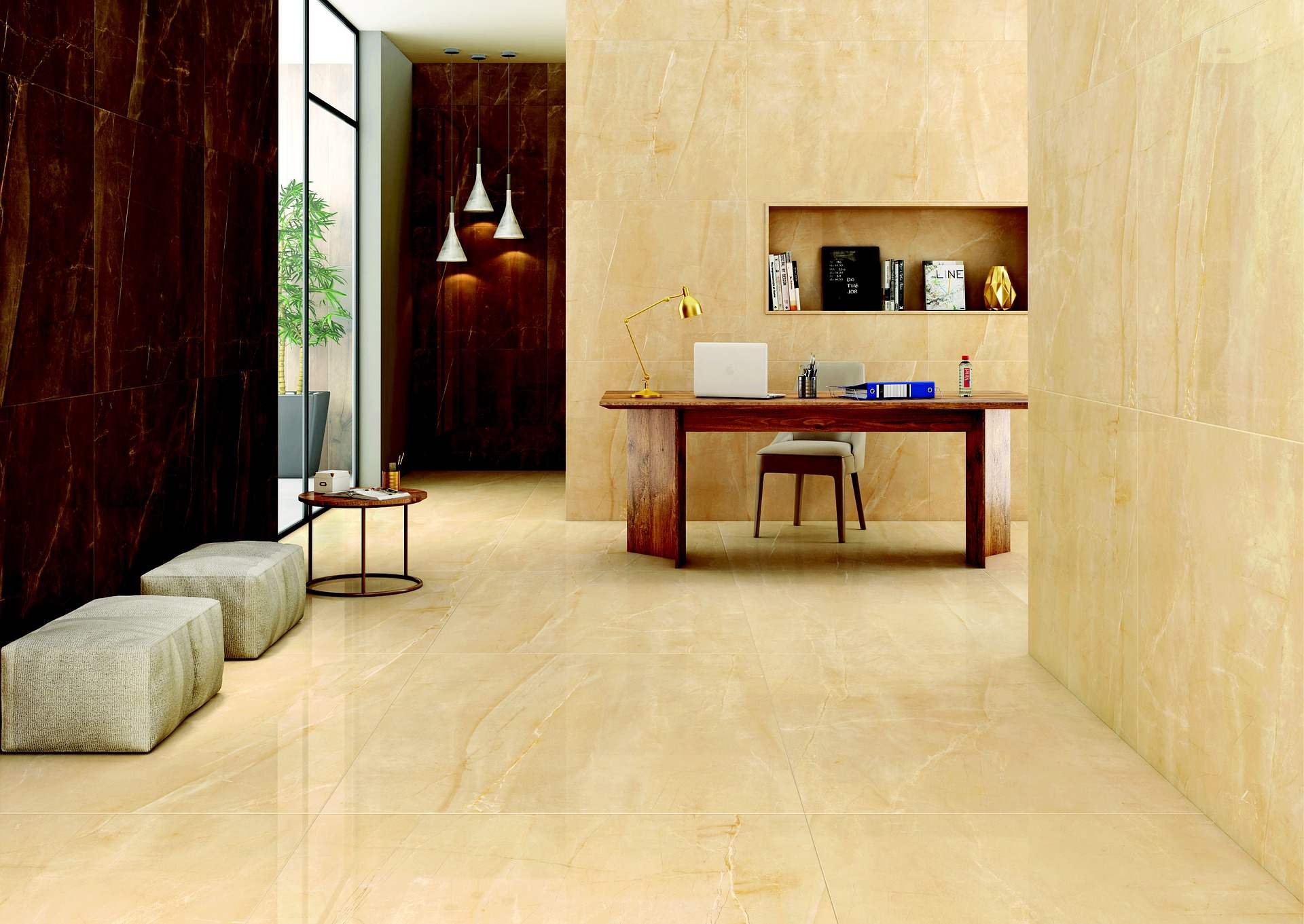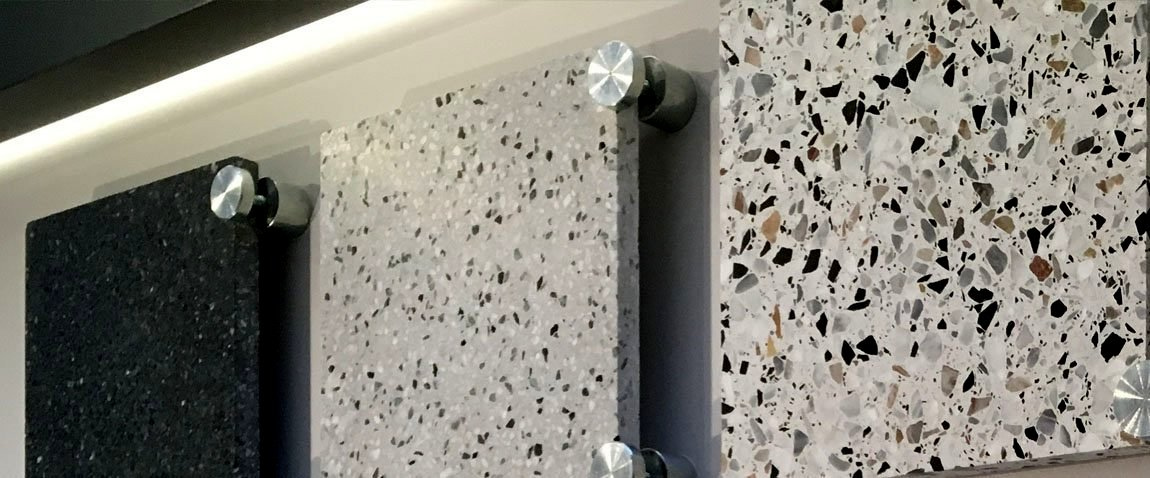Let’s face it - when it comes to doing up our homes, the focus is on the walls, the furniture and the overall appearance of the space at eye level. The choice of flooring is usually just an afterthought. However, the kind of flooring you choose goes a long way in enhancing the look of your home. Although there is no dearth of options, tiles are usually considered to be an optimum choice, in terms of appearance, maintenance and the number of patterns and designs available. Let’s have a look at some of the common types of tiles popularly used in Indian homes.
Types of Tiles Used In Indian Homes
Ceramic Tiles:
Ceramic Tiles are made up of sand, natural products and clays. Once moulded into the required shape, they are fired in a kiln.
There are two types of Ceramic tiles:
Glazed Ceramic Tiles: An additional layer of glass is added to the tiles during the firing process. These are less dense as compared to Unglazed tiles, are not very slip-resistant, and are prone to scratches. However, these are available in a wide variety of colours, and finishes and are quite stain-resistant.
Unglazed Ceramic Tiles: These tiles are denser, have natural, earthy colouring, and are slip-resistant. However, they are vulnerable to stains and need a sealant to protect them.
Ceramic Tiles are extremely durable and easy to maintain. In terms of hygiene, these types of tiles do not attract pollen, dust, or dirt, and can be cleaned using a simple mop or sponge.
One downside is that these tiles are hard and do not hold on to heat very well. They can get uncomfortably cold during the winter. They are also heavy and their installation needs to be done with care.
Porcelain Tiles:
Porcelain tiles are similar to ceramic tiles but are far stronger, harder and water resistant. Owing to their durability and resistance to water, these tiles are used extensively in bathrooms and toilets. These types of tiles are also available in a variety of colours and patterns.
Porcelain tiles are stain resistant, especially when glazed, and can be cleaned with a pH-balanced solution of dish soap and water.
They are fire-proof, and extremely durable if used well. These types of tiles are generally resistant to cracking, and even if they do crack, the disfigured tile can be removed and replaced.
Since these types of tiles are heavy and hard, it takes a lot of time and effort to install them.
Vitrified Tiles:
Vitrified tiles are non-porous types of ceramic tiles, made by hydraulic pressing of a mixture of clay, silica, quartz, and feldspar. These types of tiles are generally used as a replacement for marble and granite flooring and are available in a wide variety of colours.
There are four categories of these tiles, based on the manufacturing process:
Double Charged Vitrified Tiles: In this process, two kinds of colour are fed into the machine resulting in a very thick layer of a double-coloured design on the tile. This layer of colour and design is around 3-4mm thick.
Full Body Vitrified Tiles: In this method, the scratches on the tiles become invisible because the tile is homogeneous and coloured throughout.
Soluble Salt Vitrified Tiles: In these types of tiles, soluble salts are used to penetrate into the vitrified tile and give colour, designs and create patterns on the tile.
Glazed Body Vitrified Tile: Glazed body vitrified tiles are tiles that are finished with a layer of liquid glass.
Vitrified tiles can be used for both, indoor and outdoor applications. They have a consistent design and pattern and are easy to lay and maintain. These types of tiles are also scratch and stain resistant.
These tiles need to be treated with care because they are prone to chipping around the corners. They are also more expensive, at Rs. 185 - Rs. 280 per sq. ft, on an avg. as compared to ceramic tiles.
Terrazzo Tiles:
Terrazzo is a flooring material traditionally made by exposing marble chips on the surface of concrete and then polishing until smooth. This is now available in tile form.
Owing to the unique designs, these tiles bear a customised look. They are easy to clean as they don’t absorb liquids easily. It can hold up to any kind of usage over a long period of time.
It is one of the most expensive types of flooring available in the market. The tiles are hard and don’t do a great job of holding on to heat. Installation is also difficult and needs a whole crew of people.
Cement Tiles:
Cement tiles are environment-friendly since they are made of natural materials and natural pigments. They can fit any room size and allow for more versatility including cutouts and embeds, imprinted patterns, etc. They are also available in thousands of colours.
These types of tiles can be tailored to suit any budget and are durable. They are fairly resistant to moisture. However, they need to be sealed regularly to avoid staining. They are also heavy and need to be supported while installing them on walls.
Stone Tiles:
Stone tiles such as marble and granite can make a home look regal. However, natural stone has various levels of absorption with granite being almost waterproof, even without the use of a sealant. Different grades (1,2 and 3) determine the quality with Grade 1 being the highest, suggesting the use of good quality, uniform materials.
Stone tiles have an earthy appearance that is aesthetically appealing. Marble, however, is highly susceptible to scratches. Some materials are also quite brittle.
That’s all there is to the types of tiles! We hope you now have a fair idea, as to what types of tiles would look best for your home.
If you would like to know how much would it cost to get your home interiors done and save nearly 25% in hidden charges, use our free interior design cost calculator today!
Still, thinking about which one to pick? Don’t hesitate - Give Hipcouch a buzz at +91 97698 91528 today!
Get Interior Designing Cost Calculators Interior Design Tips, Guides to help you make Smart Choices for your Interiors & Decor without filling up your email inbox!







